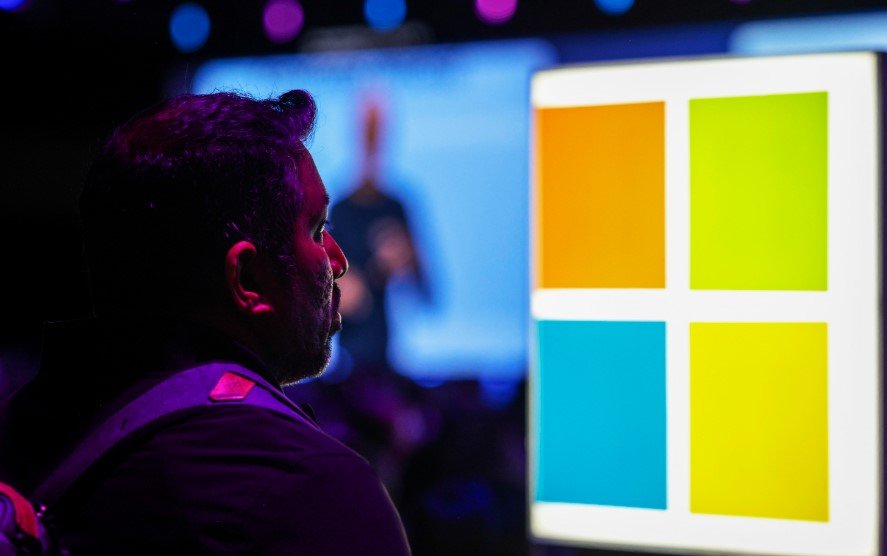“Mouse and keyboard will feel like MS-DOS”: Microsoft VP teases future where Copilot becomes the OS
Microsoft’s vision for the future of Windows sounds more like science fiction than software. But it’s real—and the company just dropped its first official tease. In a short video labeled Windows 2030 Vision, Microsoft is laying the groundwork for a dramatically different kind of user interface—one that could upend decades of habits with mouse clicks and keystrokes.
The teaser, featuring David Weston, Corporate VP of Enterprise & Security, doesn’t mince words. He suggests that traditional Windows interactions may soon feel as outdated as the clunky MS-DOS prompt does to Gen Z. And the reason? AI. Lots of it.
Windows and Copilot Could Merge—Literally
The promo positions a near future where Microsoft’s Copilot—currently a sidebar assistant in Windows 11—evolves into something bigger. Not a tool, but the core interface. An OS with eyes, ears, and the ability to understand commands in natural language.
Weston describes this shift in sweeping terms. “The future version of Windows and other Microsoft operating systems will interact in a multimodal way,” he says. “The computer will be able to see what we see, hear what we hear, and we can talk to it.”
Let that sink in.
This isn’t just another AI chatbot. It’s the operating system itself.

From Clicking to Conversing: What This Really Means
The implication is a full shift from “commanding” a computer to simply “asking” it to do things. Think fewer drop-down menus and more, “Hey Windows, book my next flight, summarize these emails, and prep the meeting deck.”
In this imagined world, software becomes less like a toolkit and more like an executive assistant.
And yes, you could say goodbye to the Start menu as we know it.
A few possible changes that were hinted or implied:
-
Agentic workflows: Tell Windows what you want, and it figures out the apps and steps.
-
Multimodal inputs: You speak, gesture, type—or even just let the OS “see” your screen and context.
-
No mouse, no problem: Mouse-clicks might go the way of the floppy disk.
Wild? Maybe. But Microsoft isn’t alone. Apple and Google are all leaning hard into AI-first user experiences.
“Agentic AI” — Buzzword or Next Big Thing?
One word that stood out in the video is agentic. It refers to AI systems that can operate independently across complex workflows. Not just suggesting actions, but taking them. Like a digital employee who understands context, pulls data, executes tasks, and adapts on the fly.
In current terms, this might look like:
-
Reading your calendar, summarizing your day
-
Sifting through files and emails to prep a report
-
Filling out forms and scheduling meetings while you dictate priorities
It’s not hard to imagine how this might reshape the workplace. Or school. Or even how we interact with basic settings on a PC.
Small paragraph alert:
But there’s a catch—this demands insane accuracy and user trust.
Why This Shift Might Actually Stick This Time
Microsoft has tried UX revolutions before (hello, Windows 8). They didn’t always stick. So why might this one be different?
-
Timing: AI is now powerful—and cheap—enough to run locally and in the cloud.
-
Copilot integration: Microsoft has already embedded Copilot into Word, Excel, Teams, and Windows 11.
-
Changing demographics: Gen Z and younger users are growing up on voice commands and AI chatbots.
One bullet list for context:
-
Windows 11: Launched Copilot as an integrated side-assistant.
-
Microsoft 365: Embedded AI for document generation, email drafts, and data analysis.
-
Azure AI: Backbone for enterprise AI features, helping train and scale multimodal models.
-
OpenAI partnership: A key enabler of everything Copilot is built on.
Basically, the plumbing is there.
So, When Does This Happen?
Here’s the honest answer: not tomorrow.
The video is labeled “2030 Vision.” That gives Microsoft five years to figure out the UI, the privacy concerns, the bugs—and the user backlash. But in tech years? Five is forever.
There’s no beta program yet. No launch dates. No official features. Just hints. Carefully chosen ones.
Still, Microsoft rarely puts out “vision” videos unless they’re serious. Back in 2010, it teased Surface and multi-device touch collaboration—years before it actually happened.
This time, the AI hype is real. And the stakes are even higher. Because if Windows becomes voice-first, agent-led, and fully context-aware, it won’t just change how we use our computers. It’ll change what “using a computer” even means.
